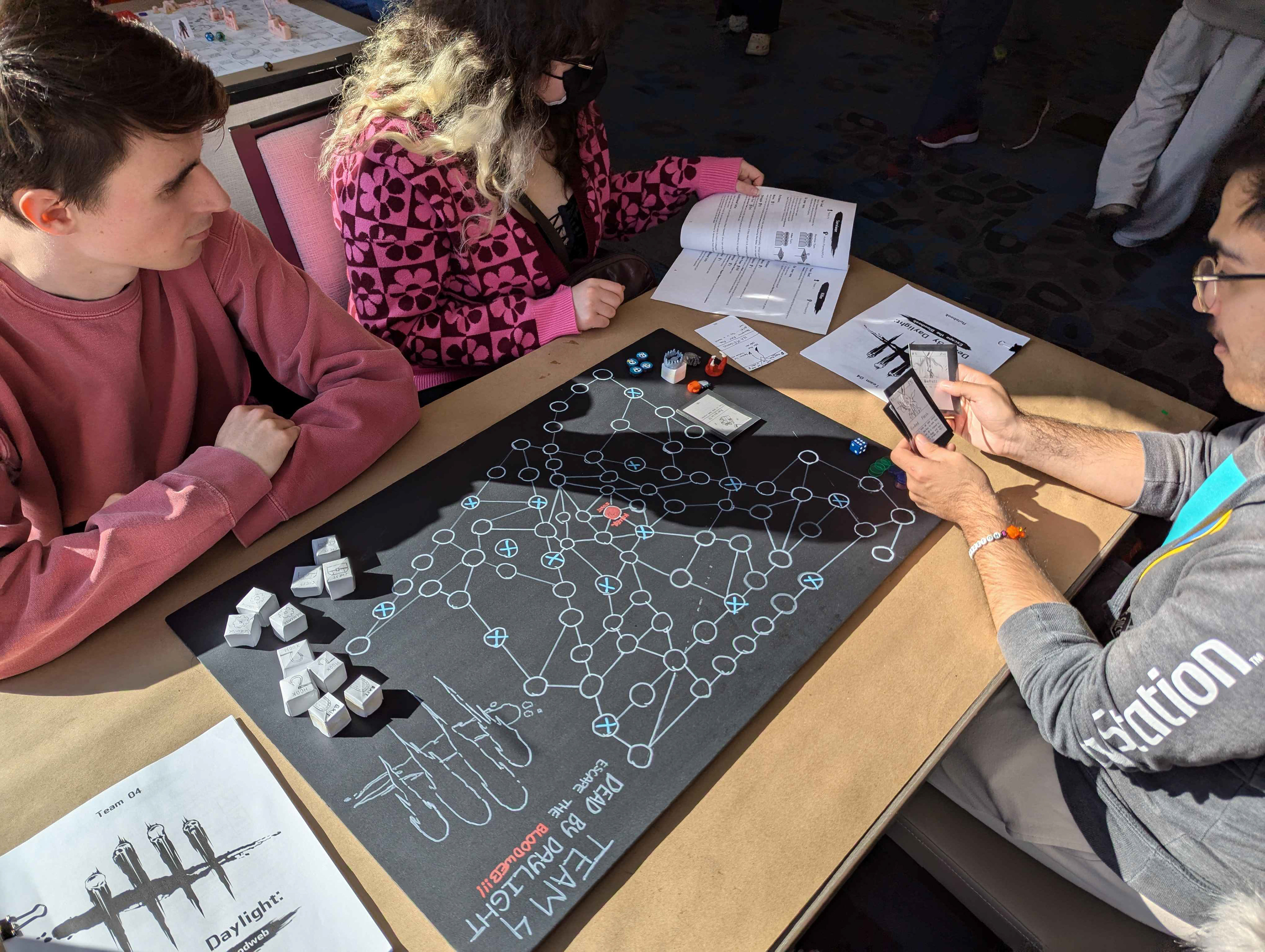About the Project
Escape the BloodWeb is a strategic board game based on Dead by Daylight. In this game, you and up to 3 more survivors must navigate the board to activate generators while evading the killer.
During my 3rd year studying at Sheridan College, I participated in design week, an event in my program where you meet a group of new people and work together on creating a game in 4 days. Our challenge was to develop an "analogue adaptation" of an existing IP. My team chose to create a board game based on Dead by Daylight.
Design Week Showcase Video
My Roles in the Project
Game Designer
Adapted a popular videogame to an analog format
Developed engaging systems and mechanics that reflect the core experience of our source material
Quickly prototyped and pitched ideas.
Technical Writer
Created a rulebook that is both comprehensive and uncomplicated
Game Design
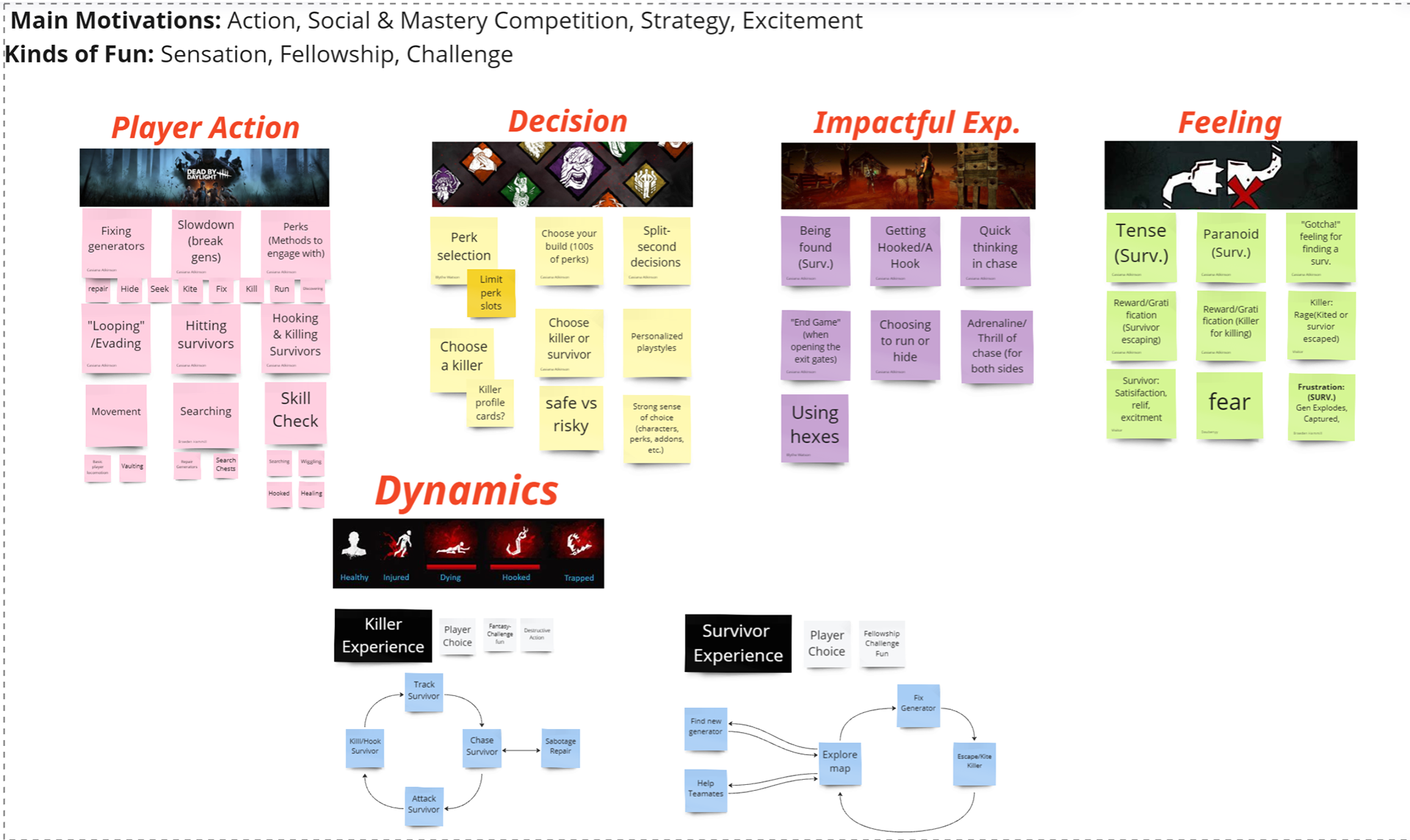
Identifying the Core Experience of Dead by Daylight
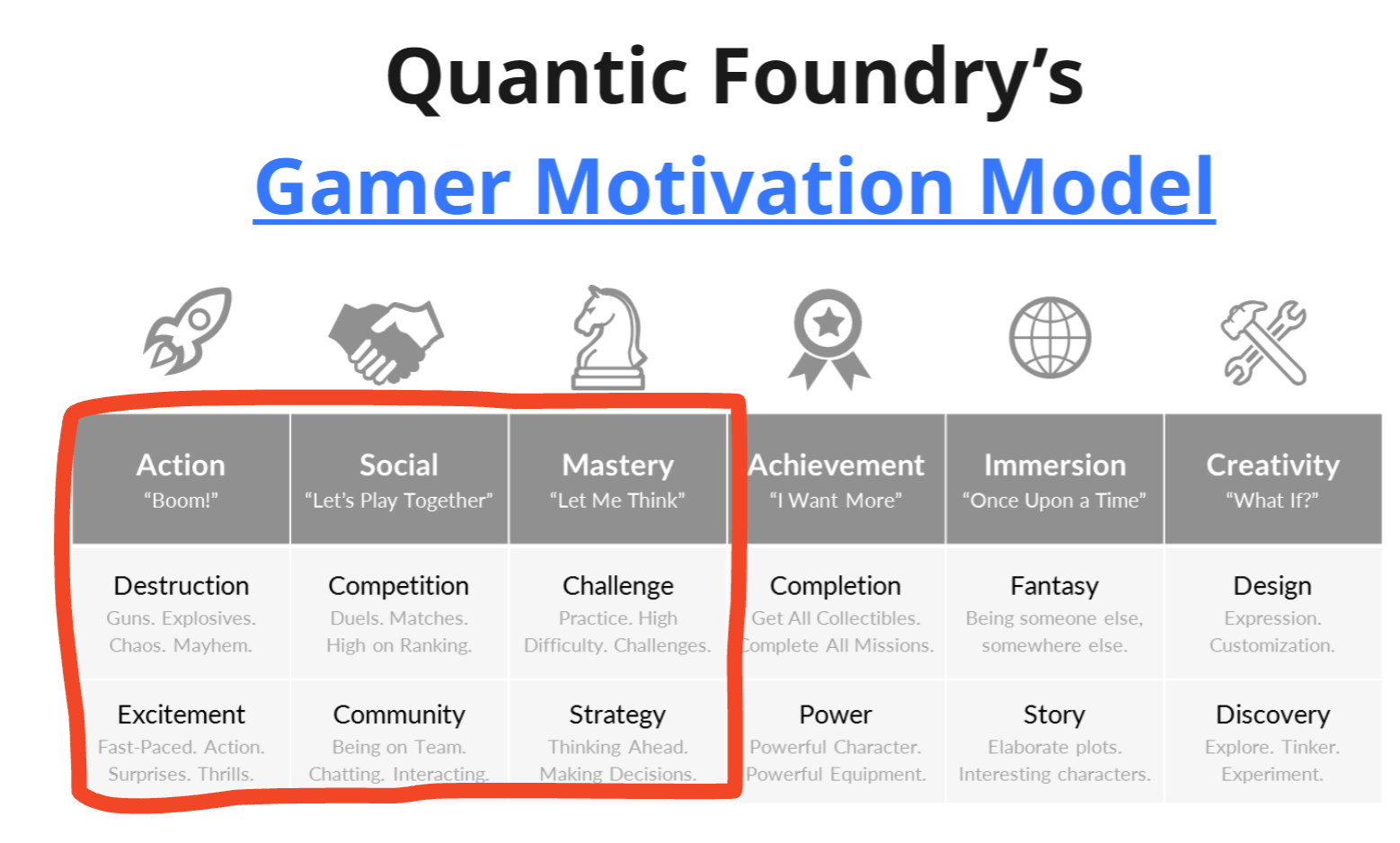
Quantic Foundry's Gamer Motivation Model
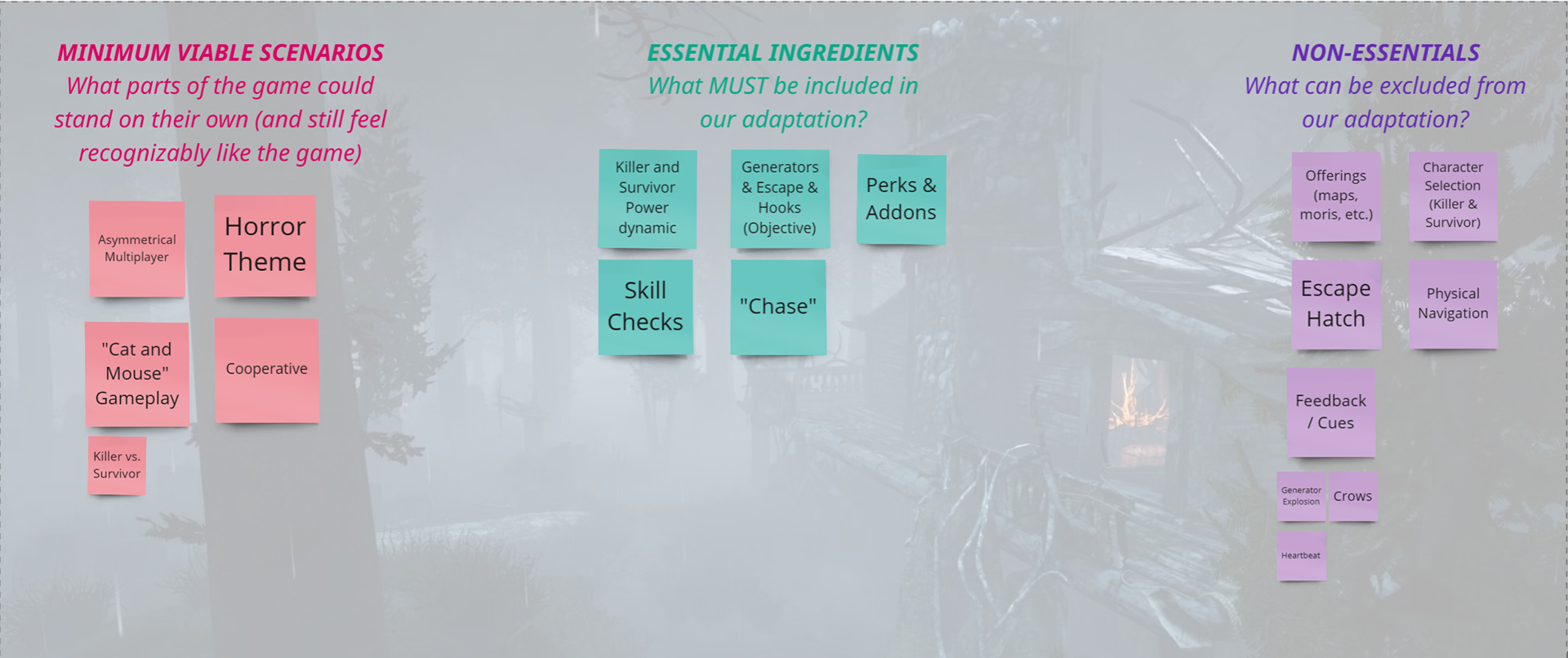
Ranking features by importance
Creating an Analog Adaptation
• It's important to understand the core experience when translating a digital game to an analog format.
• We identified the types of players Dead by Daylight appeals to using Quantic Foundry's Gamer Motivation Model.
• To narrow the game's focus we sorted the most important features into 3 categories; Minimum Viable Scenarios, Essential Ingredients, and Non-Essentials.
Pitching My Idea
• I thought the "Cat & Mouse" gameplay of a killer chasing survivors had potential
• Inspired by the game where one person hides a ball inside of a cup and the other must guess which one the ball is under.
• Created a proof of concept in Adobe Premiere Pro to help communicate this idea
• The team decided to focus more on board navigation and special powers but the mechanic where survivors hide under objects became a big part of the final game
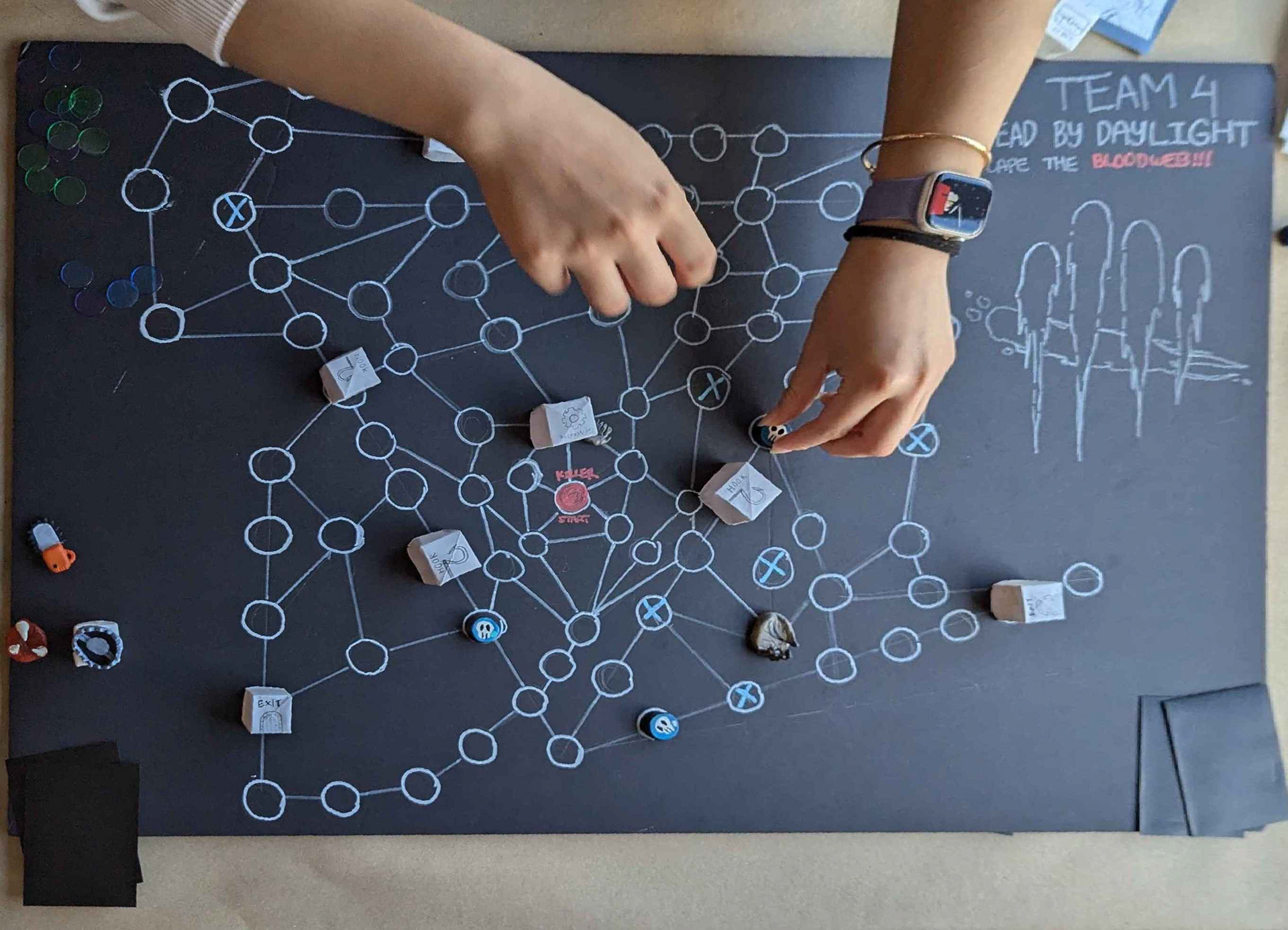
Testing the Game
Improving the Game
• As we were writing the rulebook, we would constantly catch ourselves going on side tangents or arguing about very specific edge-cases.
• Everyone seemed to have a different idea of the rules in their own head
• Our solution was to actually start playing the game, this way we could solve problems in real-time instead of trying to imagine scenarios
• Creating prototypes allowed us to solve problems much quicker
Technical Writing
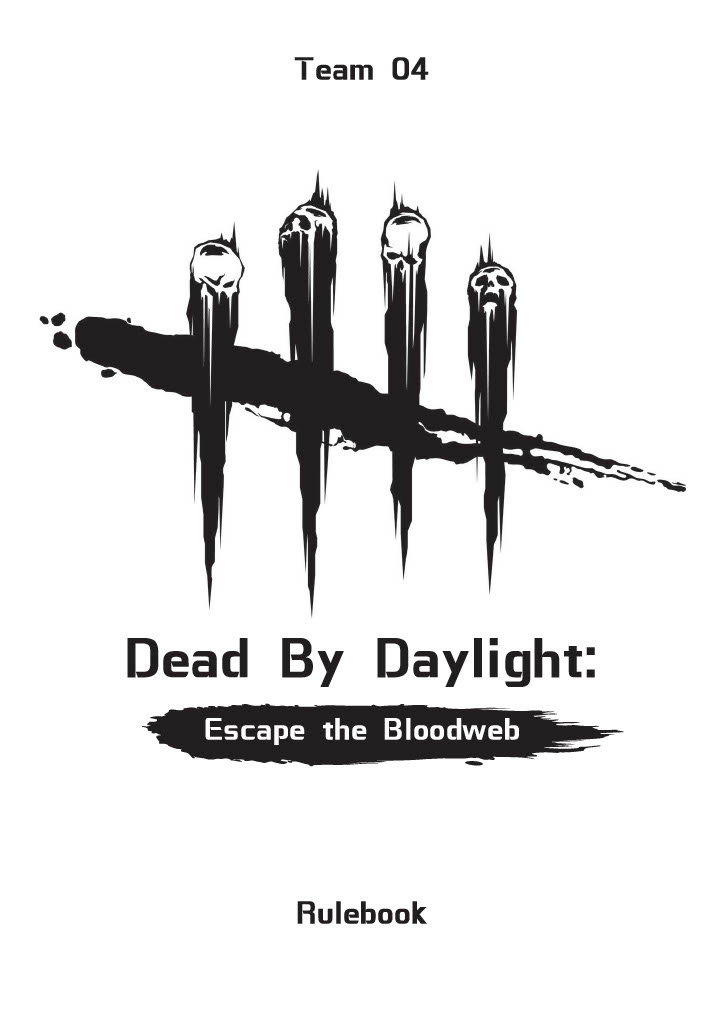
Rulebook Front Page
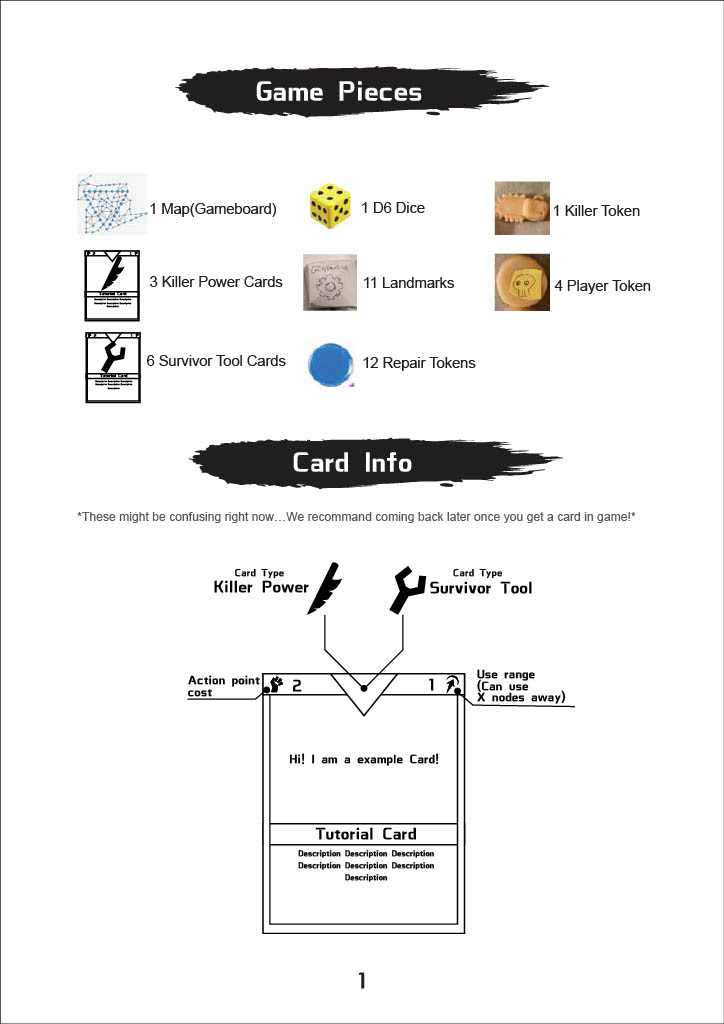
Rulebook p.1
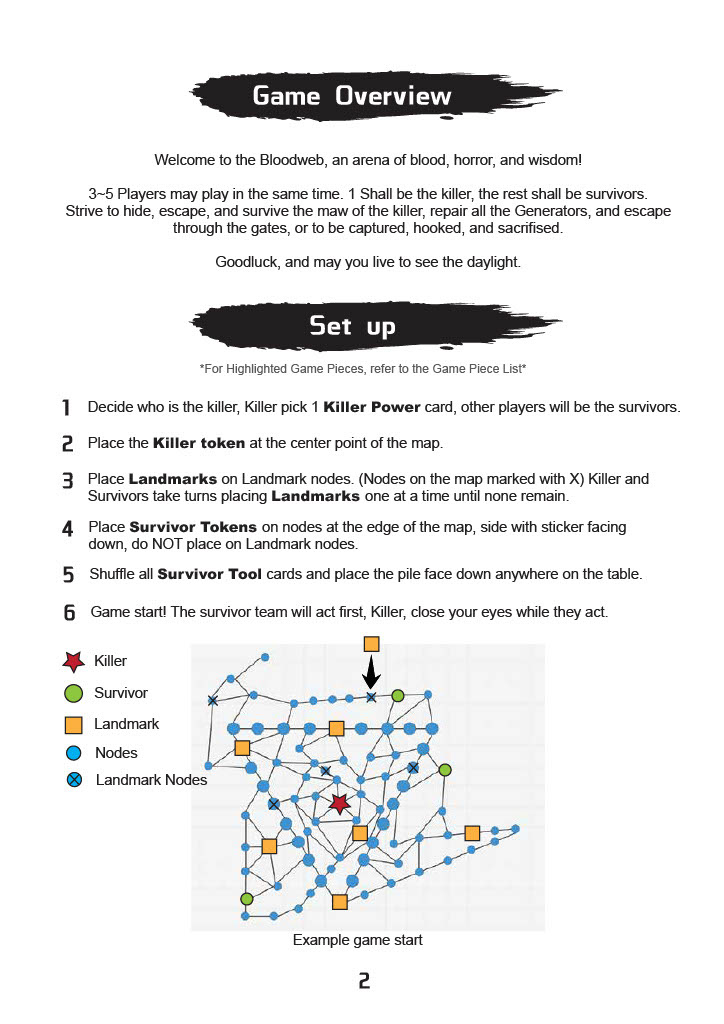
Rulebook p.2
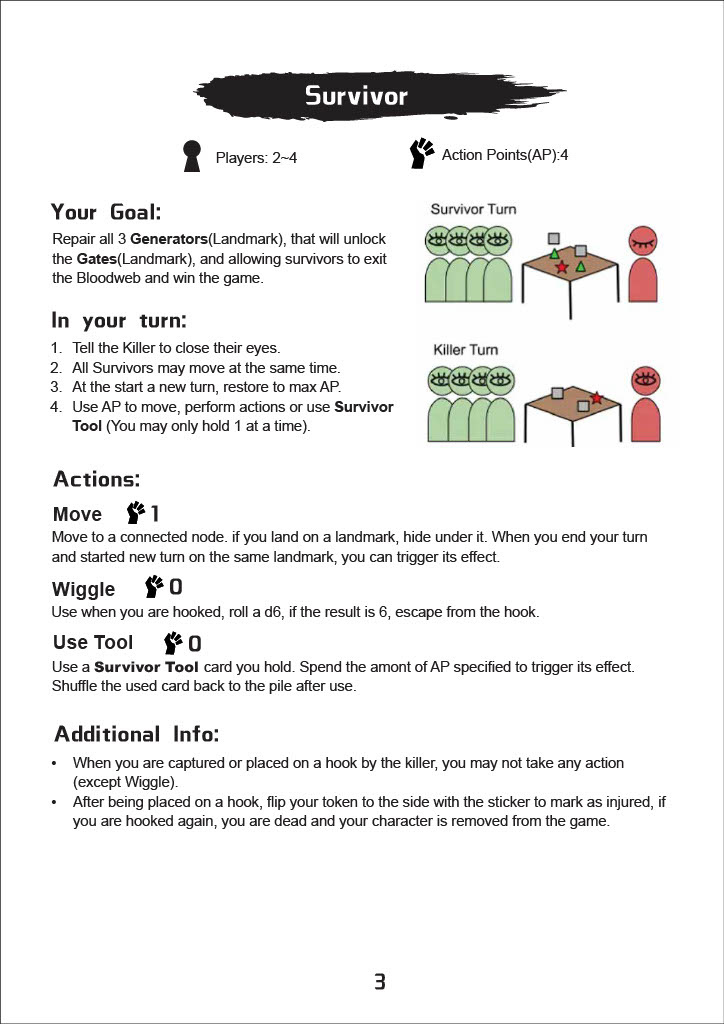
Rulebook p.3
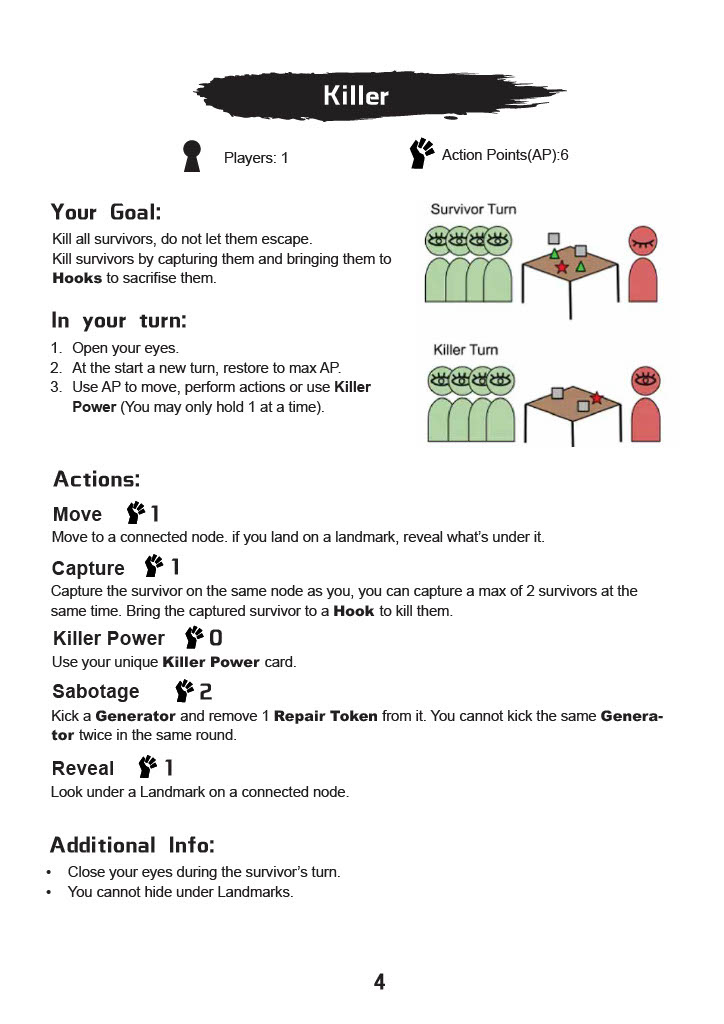
Rulebook p.4
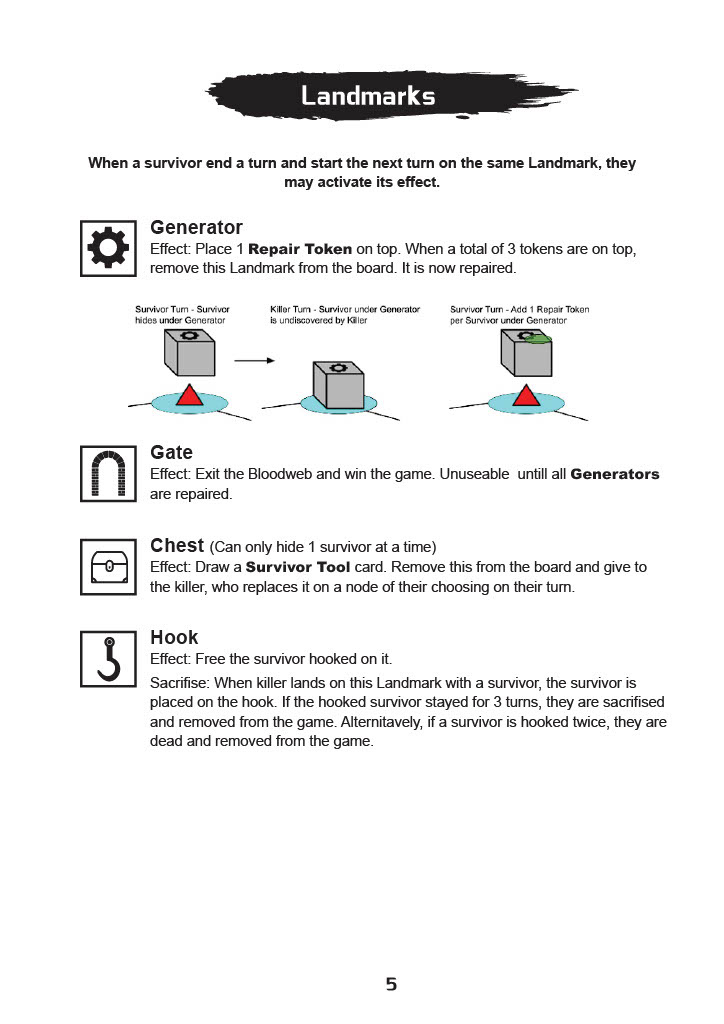
Rulebook p.5
Making a Rulebook
• Very iterative process
• Each playtest helped us discover more issues with the rulebook
• It's challenging to present lots of information without people getting overwhelmed
• Learned that players don't need to know everything right at the start
• If information is easy to find, players can look for specific rules during gameplay
• Included lots of visuals and diagrams to make the rules easier to understand
Final Product
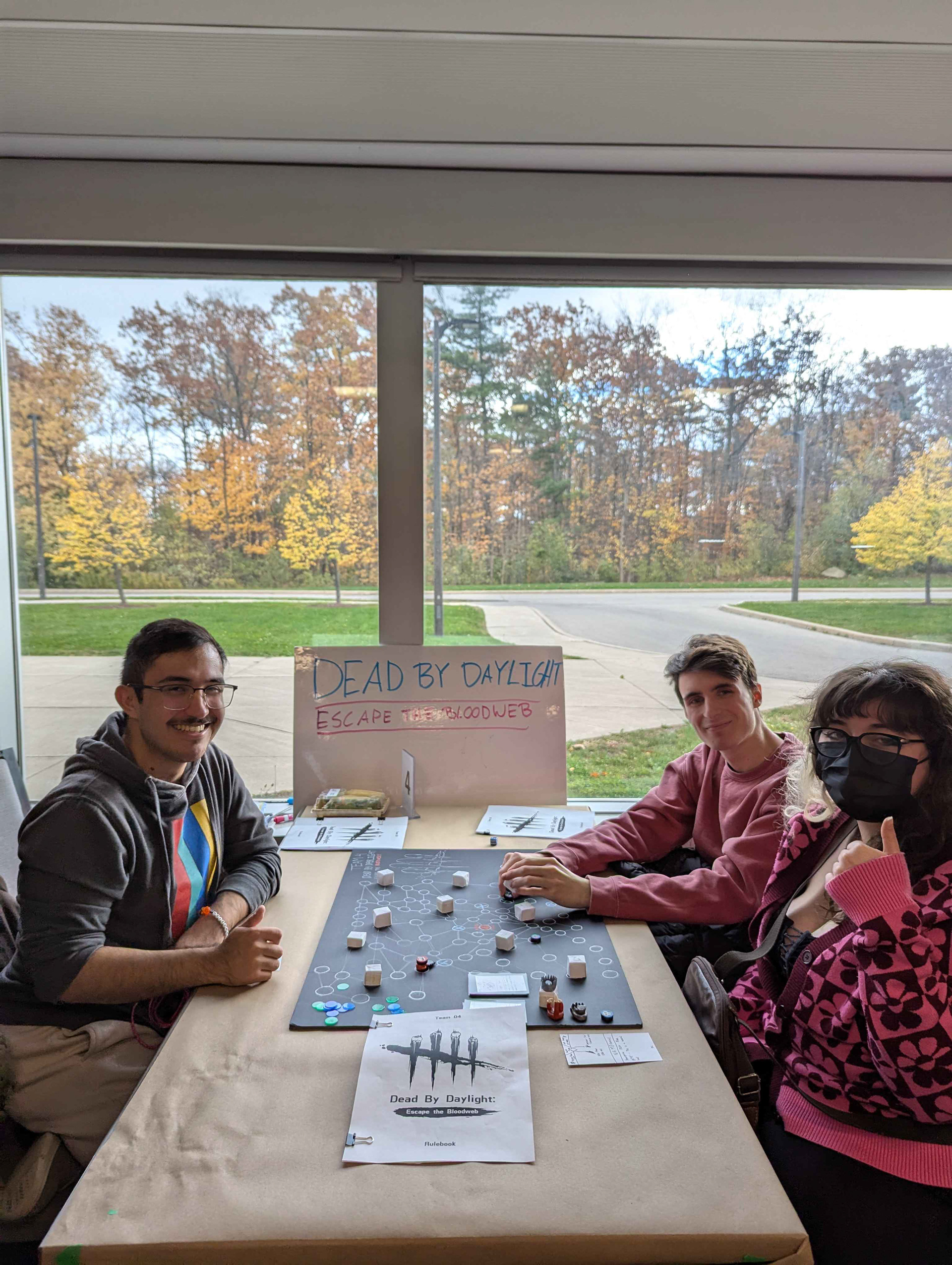
Playing The Game
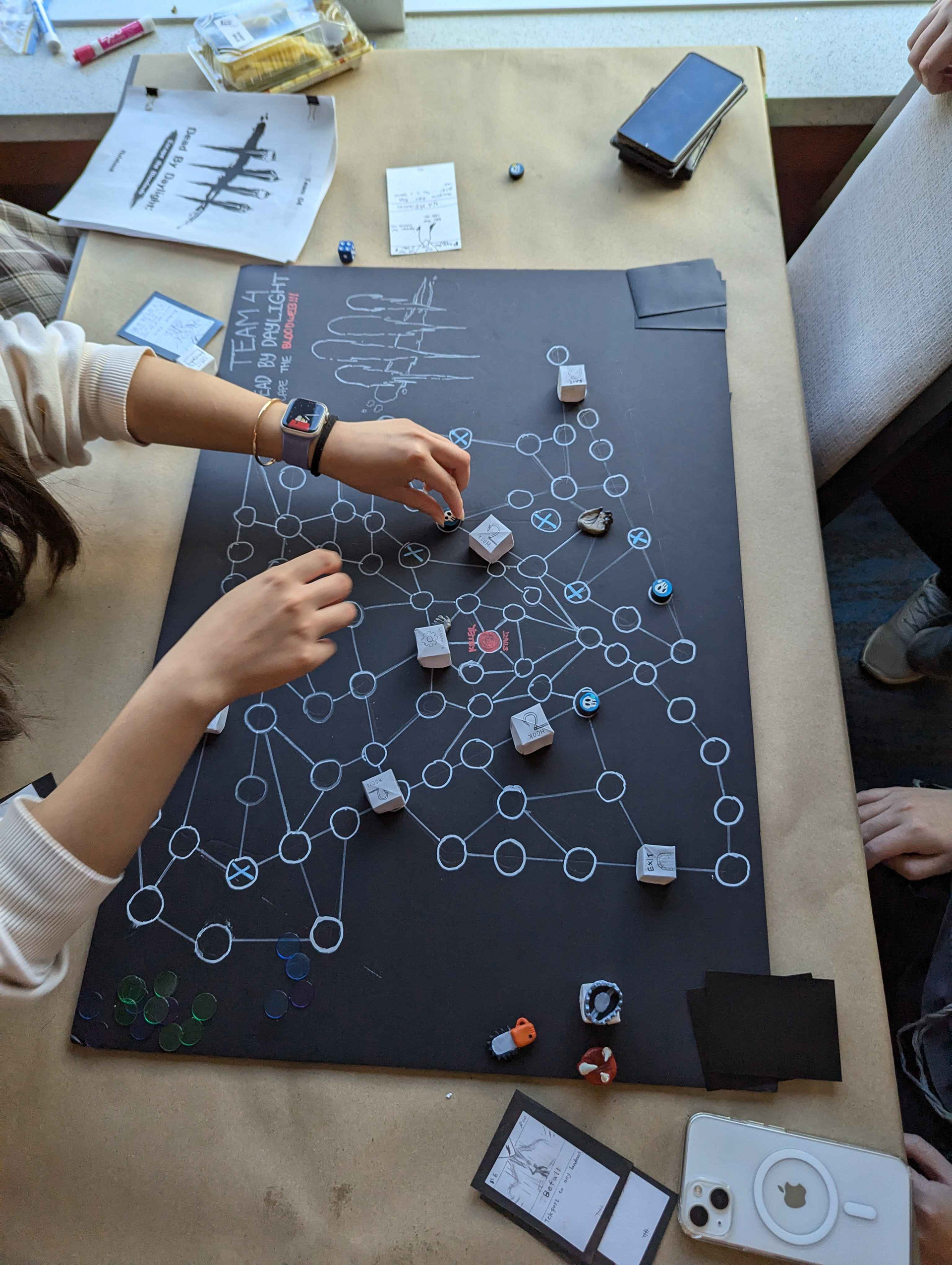
Playing the Game 2
